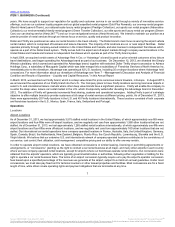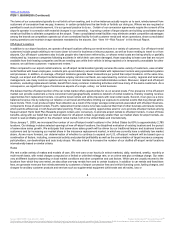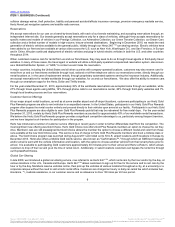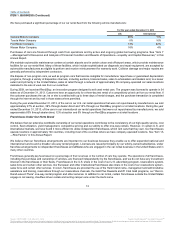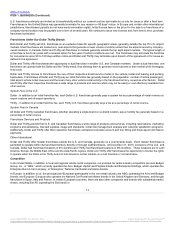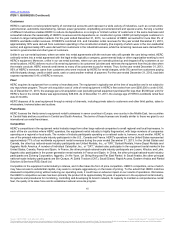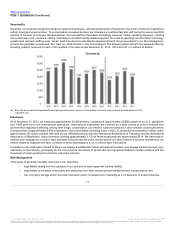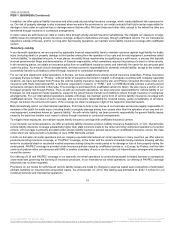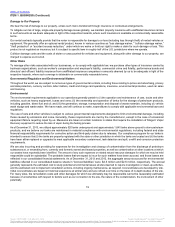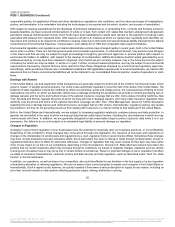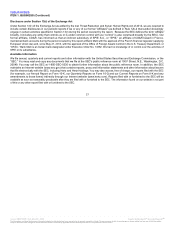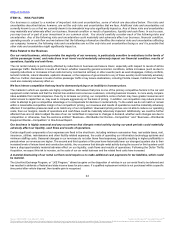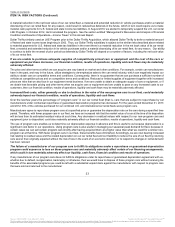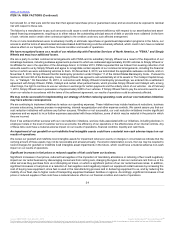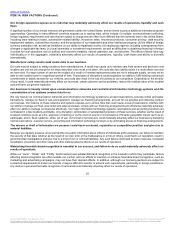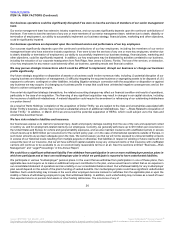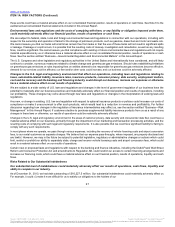Hertz 2013 Annual Report Download - page 20
Download and view the complete annual report
Please find page 20 of the 2013 Hertz annual report below. You can navigate through the pages in the report by either clicking on the pages listed below, or by using the keyword search tool below to find specific information within the annual report.
Table of Contents
Generally, car rental and equipment rental are seasonal businesses, with decreased levels of business in the winter months and heightened
activity during spring and summer. To accommodate increased demand, we increase our available fleet and staff during the second and third
quarters of the year. As business demand declines, fleet and staff are decreased accordingly. However, certain operating expenses, including
real estate taxes, rent, insurance, utilities, maintenance and other facility-related expenses, the costs of operating our information technology
systems and minimum staffing costs, remain fixed and cannot be adjusted for seasonal demand. Revenues related to our fleet management
services are generally not seasonal. See “Item 1A—Risk Factors” in this Annual Report. The following tables set forth this seasonal effect by
providing quarterly revenues for each of the quarters in the years ended December 31, 2013, 2012 and 2011 (in millions of dollars).
(a) Amounts are computed independently each quarter and as such, the sum of the quarter's amounts may not equal the total amount for the
respective year.
As of December 31, 2013, we employed approximately 30,400 persons, consisting of approximately 22,800 persons in our U.S. operations
and 7,600 persons in our international operations. International employees are covered by a wide variety of union contracts and
governmental regulations affecting, among other things, compensation, job retention rights and pensions. Labor contracts covering the terms
of employment of approximately 5,900 employees in the United States (including those in the U.S. territories) are presently in effect under
approximately 130 active contracts with local unions, affiliated primarily with the International Brotherhood of Teamsters and the International
Association of Machinists. Labor contracts covering approximately 1,120 of these employees will expire during 2014. We have had no
material work stoppage as a result of labor problems during the last ten years, and we believe our labor relations to be good. Nonetheless, we
may be unable to negotiate new labor contracts on terms advantageous to us, or without labor interruptions.
In addition to the employees referred to above, we employ a substantial number of temporary workers, and engage outside services, as is
customary in the industry, principally for the non-revenue movement of rental cars and equipment between rental locations and the
movement of rental equipment to and from customers' job sites.
Three types of generally insurable risks arise in our operations:
•legal liability arising from the operation of our cars and on-road equipment (vehicle liability);
•legal liability to members of the public and employees from other causes (general liability/workers' compensation); and
•risk of property damage and/or business interruption and/or increased cost of operating as a consequence of property damage.
17
Source: HERTZ CORP, 10-K, March 31, 2014 Powered by Morningstar® Document Research℠
The information contained herein may not be copied, adapted or distributed and is not warranted to be accurate, complete or timely. The user assumes all risks for any damages or losses arising from any use of this information,
except to the extent such damages or losses cannot be limited or excluded by applicable law. Past financial performance is no guarantee of future results.


